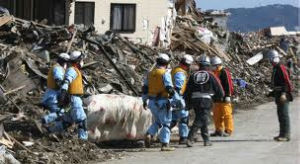BMP’s Notes on “Supply Chain Resiliency: Lessons Learned from the Crisis in Japan”
I was really looking forward to this event, and it did not disappoint. This is the first event I have attended by Preparis (providers of an emergency preparedness suite) and I will add them to my list of sources for future webinars. Kudos to Bill Michaels (CEO, ADR North America), David Landsman (Director of Strategic Alliances, MFG.com) and Armistead Whitney (CEO, Preparis) for an exceptionally well done event. You can click here to listen to the event archive.

Direct impacts of the disaster:
The consumer electronics impacted by the supply chain disruptions in Japan should be back to their previous levels by late September. Examples are LCD screens, flash memory, and semiconductor manufacturing.
The automotive industry has been particularly hard hit because they forecast so far in advance to meet the needs of their coming model year. Toyota took a credit downgrade and Honda issued an earnings warning.
Despite the high profile effects of the earthquake and resulting tsunami, supply chain disruptions are not new. Here are some statistics on 2010:
75% of supply chains experienced some disruption
40% of those disruptions were so severe that they required the company to find a new source
28% of the suppliers who had to explain disruptions to their clients gave insolvency as the reason
- Source: “2010 Supply Chain Disruption Report”, The Business Continuity Institute
Things You Can Do to Minimize Risk:
- Know who your suppliers’ suppliers are and what THEY are doing to minimize risk
- Survey suppliers so you can assess any financial or insurance risk
- Document the likely length and cost impact of possible disruptions
- Carry inventory of critical components (many lean practices increase the risk of supply chain disruptions)
- Pre-qualify backup suppliers so contracts can be put in place quickly
- Increase supply chain transparency: Tier 1, 2, and 3 suppliers as well as raw materials brokers
- Shrink your supply chain geographically (using nearshoring rather than offshoring)
Other take-aways:
Although the most straightforward examples of supply chain disruption are from the manufacturing sector, service sector companies are not immune. Storms, fires, and floods can strike, damaging computers and/or records. Regardless of format, any records management strategy should include dual sources for document recovery.
Give careful thought to where supply chain risk is managed in your organization and whether that function possesses the expertise to do so.
Some suppliers may need reassurance before offering up all of the information you need to accurately assess risk. Don’t give up – condition them to understand what you’re planning to do with any information they consider sensitive. If they really won’t allow you the level of transparency you need, they should be considered a risk to do business with.
If it is not a core competency of your organization to manage supply chain risk, get help. Bring in an expert to manage and validate your risk.
When you subscribe to the blog, we will send you an e-mail when there are new updates on the site so you wouldn't miss them.